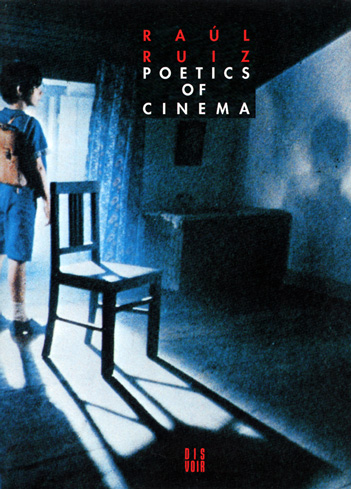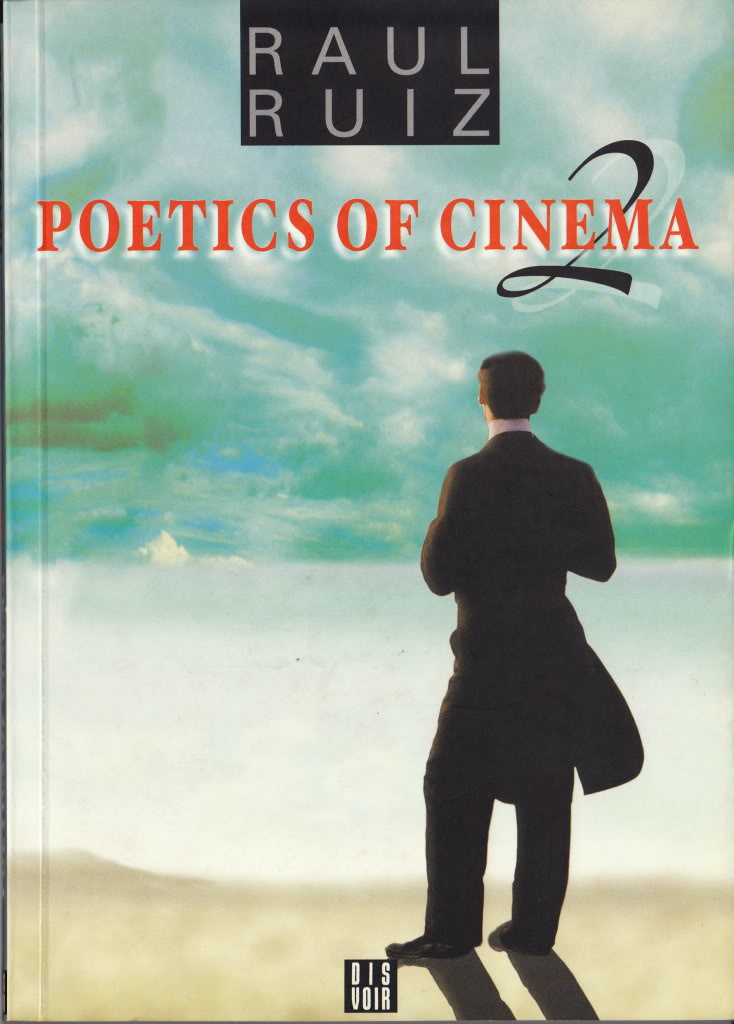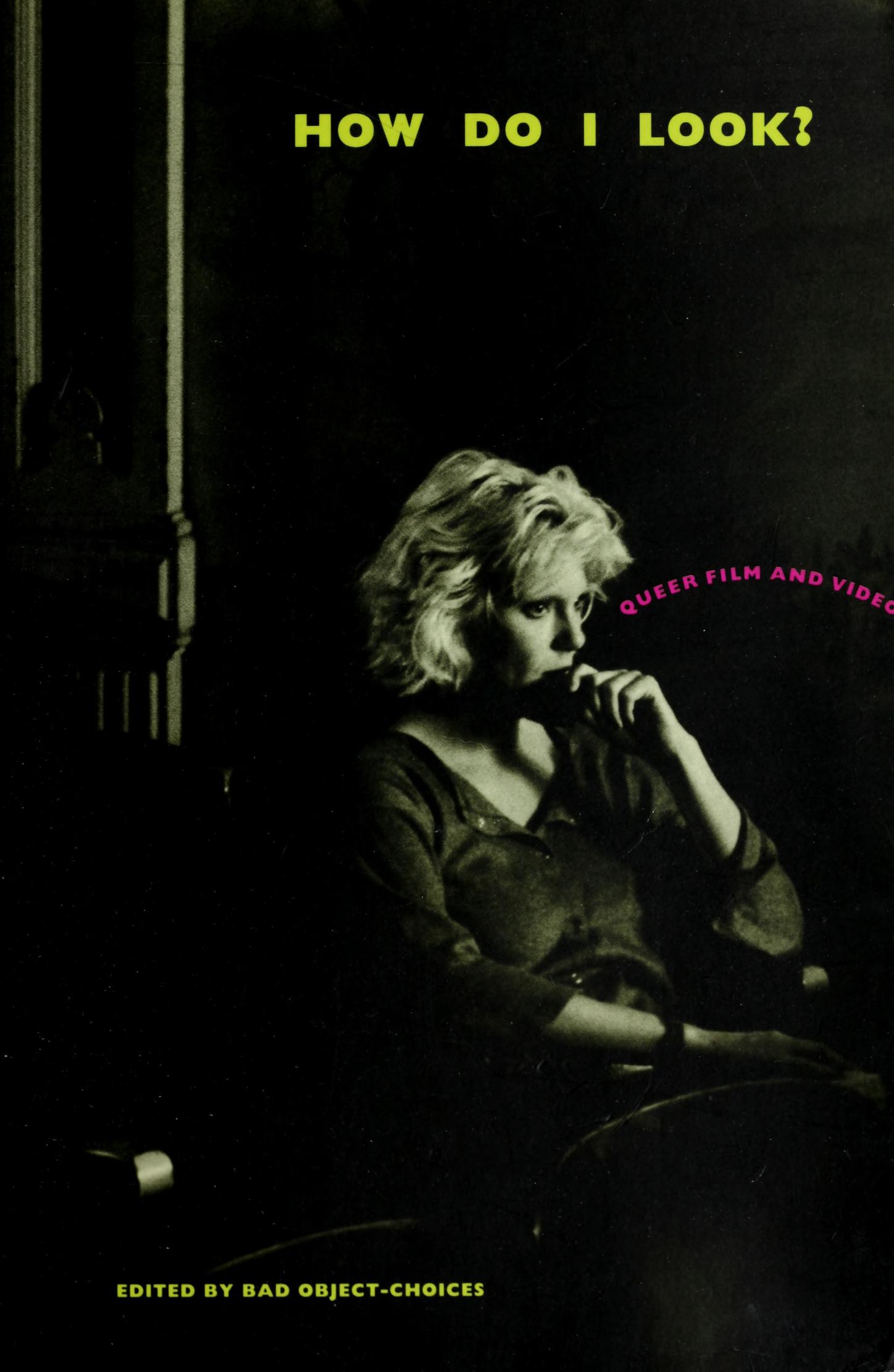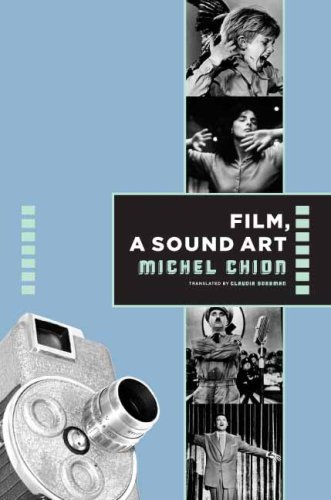Raúl Ruiz: Poetics of Cinema (1995–) [EN, ES]
Filed under book | Tags: · cinema, film, film theory, image, poetics, theory, unconscious


“Chilean filmmaker Raoul Ruiz is the author of some 100 feature-length films, along with numerous plays and multi-media installations. In Poetics of Cinema, Ruiz takes a fresh approach to the major themes haunting our audio-visual civilization: the filmic unconscious, questions of utopia, the inter-contamination of images, the art of the copy, the relations between artistic practices and institutions. Based on a series of lectures given at Duke University in North Carolina, Poetics of Cinema develops an acerbically witty critique of the reigning codes of cinematographic narration, principally derived from the dramatic theories set forth by Aristotle’s Poetics and characterized by Ruiz as the “central-conflict theory.” Ruiz’s knowledge of theology, philosophy, literature and the visual arts never outstrips his imagination. Poetics of Cinema not only offers a singularly pertinent analysis of the seventh art, but also shows us an entirely new way of writing and thinking about images.” (Source)
Translated by Brian Holmes (I) and Carlos Morreo (II)
Publisher Dis Voir, Paris, 1995 & 2007
ISBN 2906571385, 9782906571389 (I), & 2914563256, 9782914563253 (II)
124 & 111 pages
via depositio
Reviews: Michael Goddard (Senses of Cinema, 2004), Acquarello (2007).
Publisher (I), (II)
WorldCat (I), (II)
Poetics of Cinema, 1: Miscellanies (English, 1995; removed on 2015-7-15 upon request of the publisher)
Poetics of Cinema, 2 (English, 2007; removed on 2015-7-12 upon request of the publisher)
Poética del cine (Spanish, trans. Waldo Rojas, 2000, 9 MB)
For more by and about Ruiz see Film Studies For Free.
Comment (0)Bad Object-Choices (eds.): How Do I Look? Queer Film And Video (1991)
Filed under book | Tags: · cinema, feminism, film, film theory, gender, lgbtq, pornography, queer theory, race, representation, sex, sexuality, video

“The papers and discussions published here comprise the proceedings of a conference held at Anthology Film Archives in New York City, October 1989, organized by Bad Object-Choices, a reading group formed in the spring of 1987 to address questions of gay and lesbian theory. The proceedings were edited by the following group members: Terri Cafaro, Jean Carlomusto, Douglas Crimp, Martha Gever, Tom Kalin, and Jeff Nunokawa.” (from the Preface)
The publication was prepared as a special issue of October journal, but ultimately rejected by the editors; and further delayed as more than twenty printers refused to print the book–at issue were images in the Patton, Mercer, and Fung essays. It was eventually printed in Germany. (see interview with Douglas Crimp and p. 10)
With essays by Cindy Patton, Stuart Marshall, Judith Mayne, Richard Fung, Kobena Mercer, and Teresa de Laurentis.
Publisher Bay Press, Seattle, WA, 1991
ISBN 0941920208
295 pages
Reviews: Jennifer A. Machiorlatti (Journal of Film and Video, 1993), Thomas Dukes (Journal of the History of Sexuality, 1994), Lauri Mullens (Int’l Gay & Lesbian Review).
PDF (65 MB, no OCR)
Comment (0)Michel Chion: Film, a Sound Art (2003/2009)
Filed under book | Tags: · aesthetics, audiovisual, cinema, film, film history, film sound, film theory, hearing, listening, music, noise, poetics, sound, sound studies, time, voice

“French critic and composer Michel Chion argues that watching movies is more than just a visual exercise—it enacts a process of audio-viewing. The audiovisual makes use of a wealth of tropes, devices, techniques, and effects that convert multiple sensations into image and sound, therefore rendering, instead of reproducing, the world through cinema.
The first half of Film, A Sound Art considers developments in technology, aesthetic trends, and individual artistic style that recast the history of film as the evolution of a truly audiovisual language. The second half explores the intersection of auditory and visual realms. With restless inventiveness, Chion develops a rhetoric that describes the effects of audio-visual combinations, forcing us to rethink sound film. He claims, for example, that the silent era (which he terms “deaf cinema”) did not end with the advent of sound technology but continues to function underneath and within later films. Expanding our appreciation of cinematic experiences ranging from Dolby multitrack in action films and the eerie tricycle of Stanley Kubrick’s The Shining to the way actors from different nations use their voices and words, Film, A Sound Art showcases the vast knowledge and innovative thinking of a major theorist.”
First published as Art sonore, le cinema, 2003
Translated by Claudia Gorbman
Publisher Columbia University Press, 2009
ISBN 0231137761, 9780231137768
536 pages
via johnsonleow
Reviews: Knakkergaard (MedieKultur, 2010), Whittington (Music, Sound, and the Moving Image, 2010), Jaeckle (Quarterly Review of Film and Video, 2011).
PDF (Index missing, 58 MB, no OCR, updated on 2023-3-9)
Comment (1)
